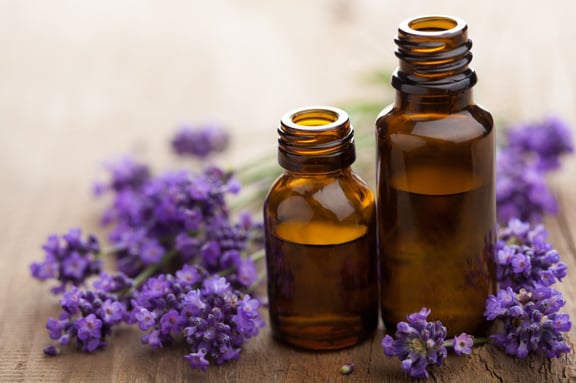The virtues of essential oils have been recorded for centuries, and aid in everything from relaxation to healing. The ancient practice dates back to biblical times, when oils were extracted from the roots, stalks, leaves and flowers of plants to cope with a variety of health issues. In the last decade essential oils have made a comeback, and are receiving a great deal of attention as a natural alternatives to harsh chemical treatments. With the popularity of essential oils on the rise, it’s important to understand how to apply them, and how to determine if they are high quality.
Understanding how essential oils affect the body is imperative for proper application. Chemical constituents of oils are lipophilic (drawn to fat that’s stored in the body) and are absorbed almost instantly through the blood-brain barrier. The molecules that make up essential oils are incredibly small, enabling them to cross the barrier, pass through the tissue, and become immersed into the bloodstream in a matter of minutes. Oils have a distinct chemical composition, comprised of esters, oxides, ketones and more. Lavender, for example, is an ester, which is proven to be anti-inflammatory, anti-bacterial, and a mild sedative.
While many labels may read “Natural” or “Pure,” it’s no guarantee that the product is quality oil. Obtaining quality essential oils requires a bit of legwork from the consumer. Before purchasing an oil, research distributors and find a reputable company that owns their own farms and distilleries. Avoid distributors that re-label another company’s product, and be careful when purchasing an oil with no expiration date. If you’re buying an oil from a store, be aware of where the bottles are displayed. If they’re in direct light or a warm area, they could be less effective.
Understanding how essential oils work is important, but so is knowing when and where to apply them. Misting oils is one application, and consists of adding one or two drops of essential oil to roughly 8 ounces of filtered water inside a clean spray bottle. The mist can be sprayed directly to the skin, or in your general space. Diffusing is a popular method but requires an automatic diffuser. One or two drops of oil are added to the diffuser’s water chamber and allow the molecules to dissipate into the air and be inhaled. Direct application to the skin is arguably the most common application, but should be done with care. Popular places to apply a small amount of oil directly to the skin are the wrists, bottoms of the feet, and back of the neck.
Consult a practitioner before diving into the world of essential oils. Practitioners can advise which oils should be diluted and cut with a carrier oil, and which oils are best for each circumstance. Below are a list of some of the most common essential oils, and their general benefits.
Eucalyptus: expectorant, decongestant, energizing (avoid using on children under the age of two)
Frankincense: strengthens the immune system, sooths skin irritation, cell regenerative
Lavender: reduces anxiety, calms, reduces skin itching, great for insect bites
Lemon: anti-viral, aids in detoxing, energizing
Peppermint: relieves nausea, analgesic for muscular aches and pains, energizing (avoid using on small children)

